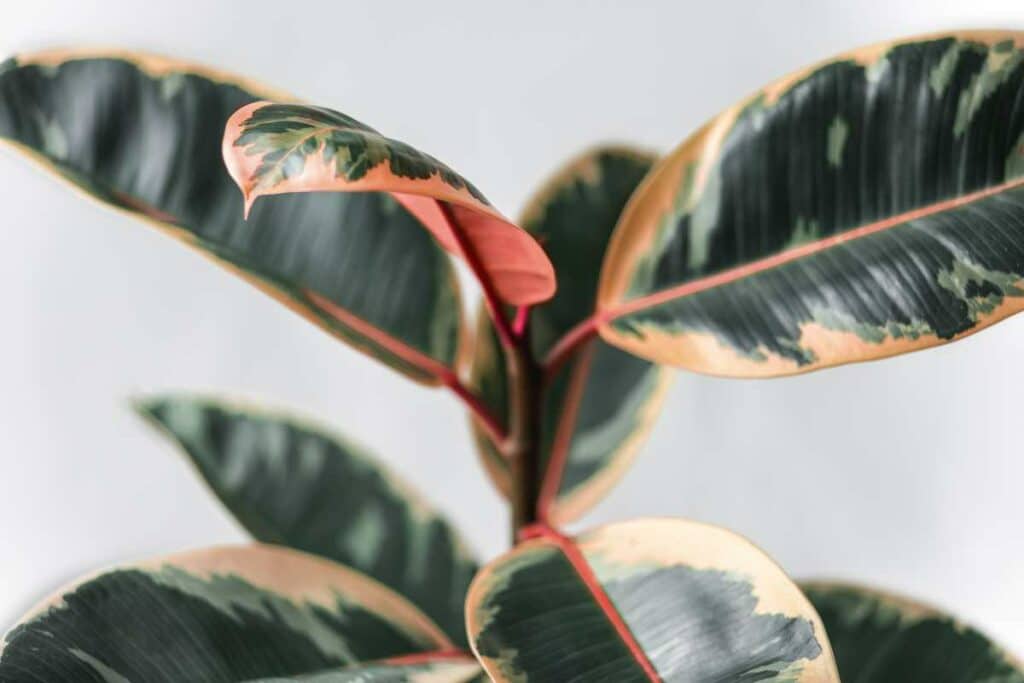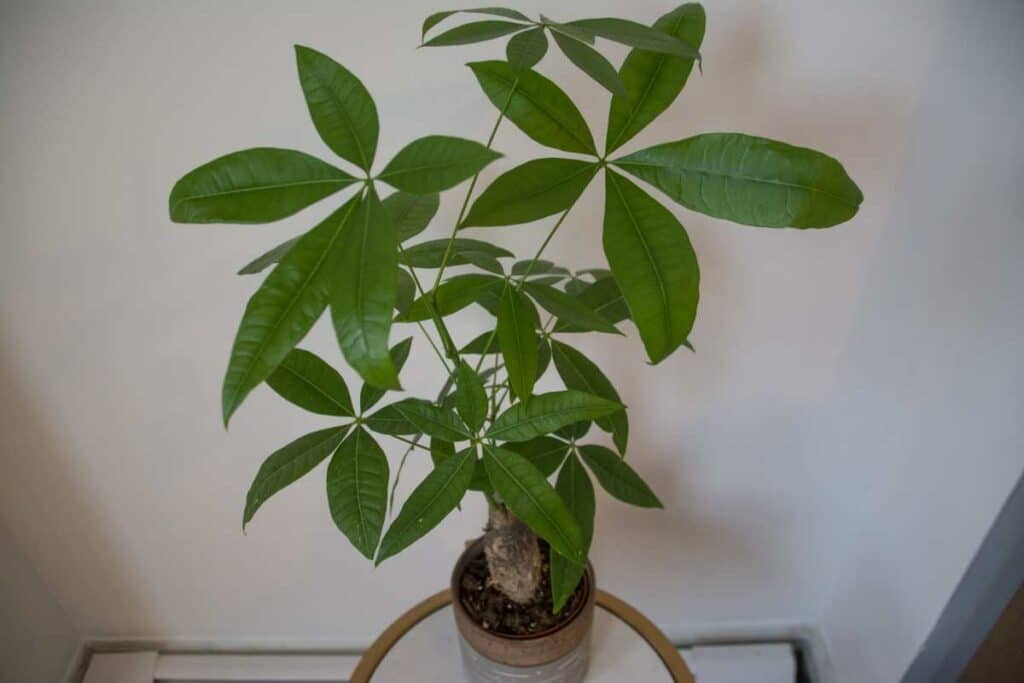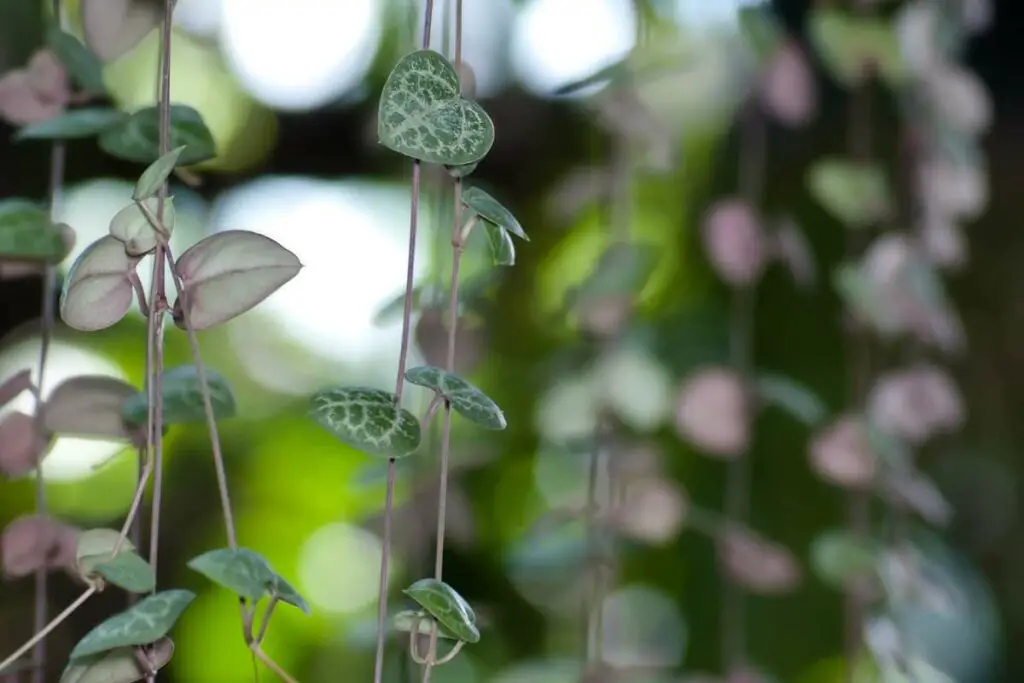Japan is one of the most highly cultured countries in the world. Its rich heritage and interesting way of life draw people in from all around the globe.
When you think about Japan, you may imagine a stunning, well-manicured Japanese garden and the beauty of these outdoor spaces is something that many people want to replicate.
It’s little wonder when you think about it; gardens filled with interesting statues, water features and of course, flowers.
But if you’re trying to create your very own Japanese haven no matter where you are in the world, you’ll want to make sure that you choose flowers that make the space feel authentic.
In This Guide: We will be looking at some of the most popular flowers in Japan and what it means to have them.
The Importance Of Flowers In Japanese Culture
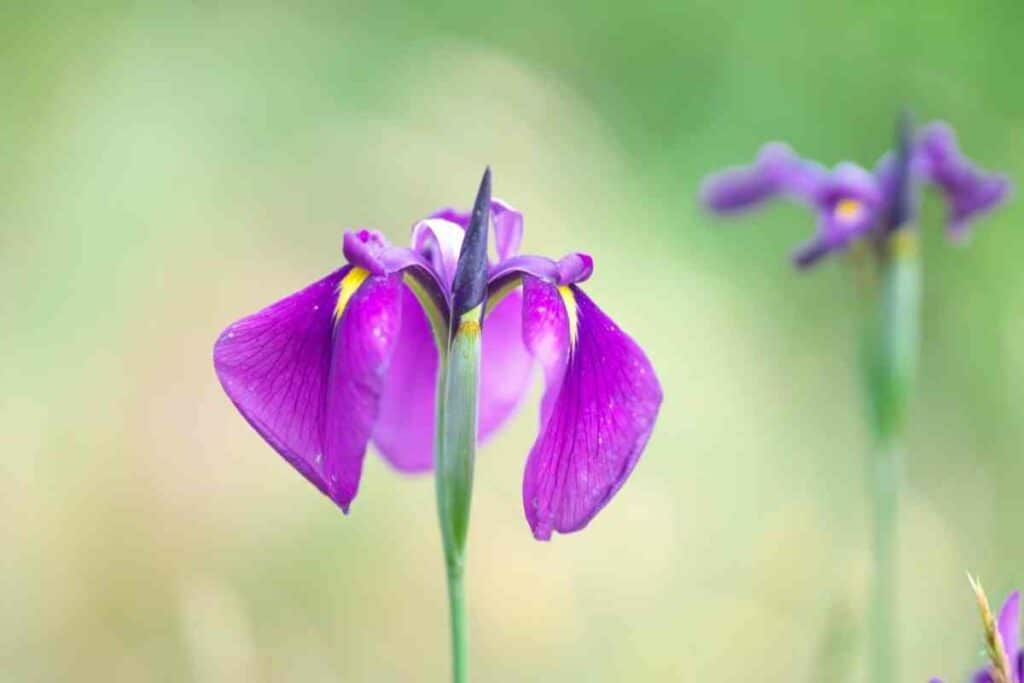
One thing that we must keep in mind when looking at flowers that are popular in Japan is that these blooms have major significance.
In Japan, flowers have their own language known as hanakotoba and this is ingrained in the country’s culture.
Flowers have very symbolic meanings and many Japanese people consider them to be able to send silent and powerful messages.
Different flower arrangements and colors have different meanings so when sending a bouquet in Japan, one must think very carefully about the blooms they choose.
Even things down to the height of the flower and the number of thorns can convey emotions and feelings.
10 Beautiful Japanese Flowers And Their Meanings
While there are many more than ten flowers that are popular around Japan, the following are some of the most well-loved.
1. Himawari Sunflowers
Blooming at the height of summer, these stunning sunflowers are among some of the most popular plants in Japan.
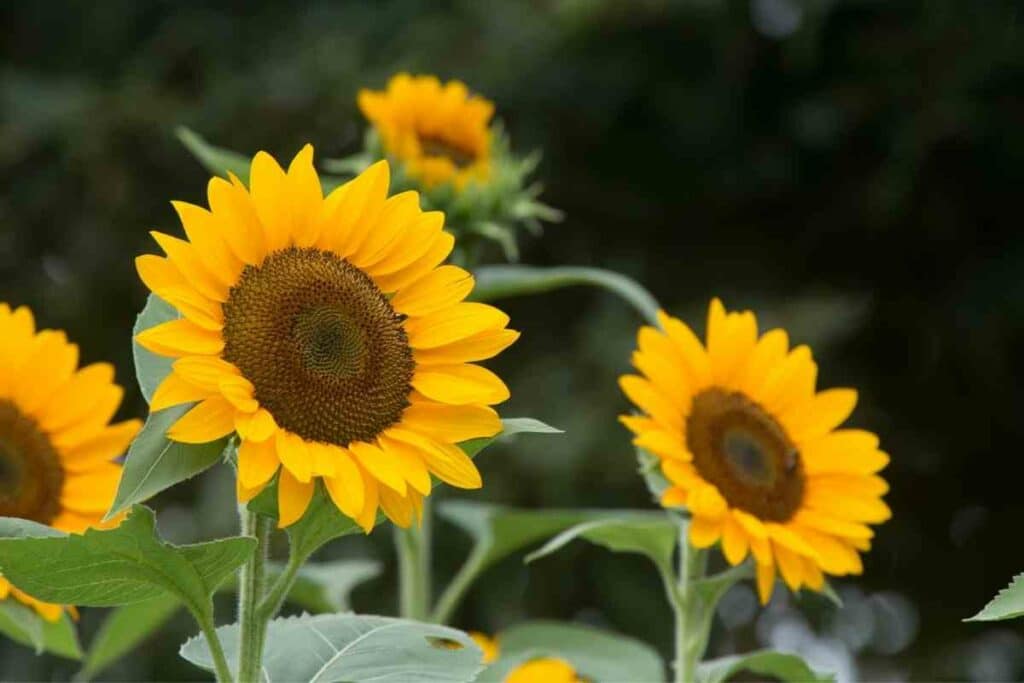
They look quite similar to other varieties of sunflower and they can usually be found growing in huge fields where the yellow hues go as far as the eye can see.
While many countries find the sunflower to be a beautiful plant, it holds a special place in the heart of the Japanese.
So much so that there is an annual festival dedicated to this wonderful flower.
The Himawari sunflower symbolizes loyalty, adoration, and longevity so it wouldn’t be uncommon to present this bloom to a loved one to convey your intentions of a long and devoted relationship.
2. Ume – Japanese Apricot
One of the most fragrant and beautifully smelling flowers on this list is the Ume, also known as the Japanese apricot.
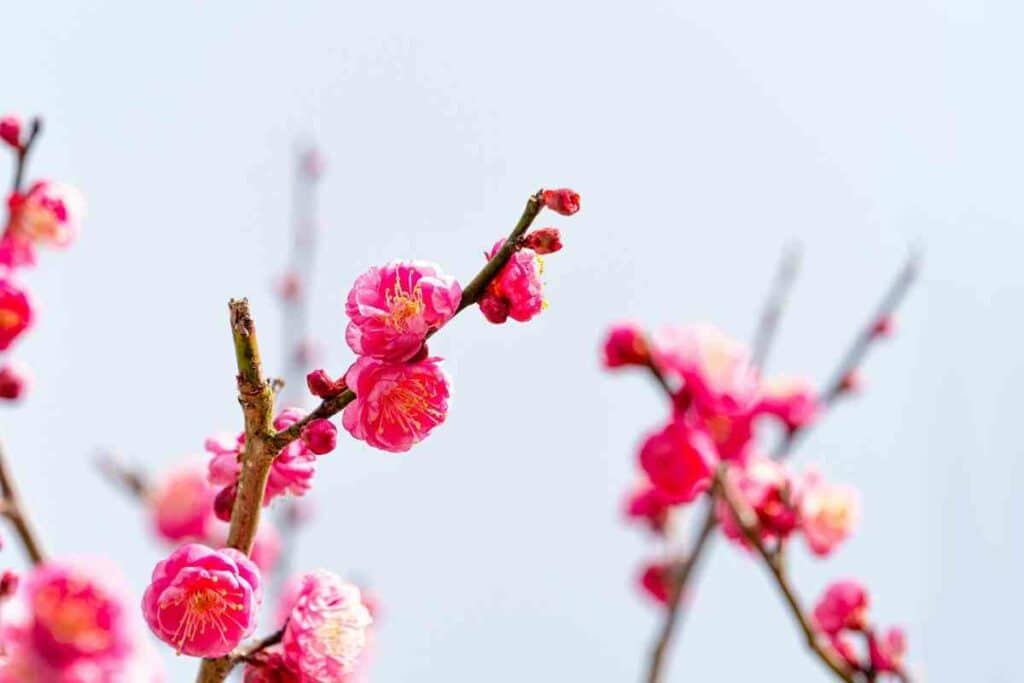
These flowers bloom on the apricot tree and have a smooth aroma that is not dissimilar to honey.
What makes the most special is that the Ume flowers are edible and if you want a challenge, the trees are suitable for bonsai.
Symbolizing faithfulness and a pure heart, these may be considered to be among some of the most innocent flowers in Japan.
3. Kaneshon – Carnation
Perhaps one of the Japanese flower names that sound most like its English counterpart is the kaneshon.
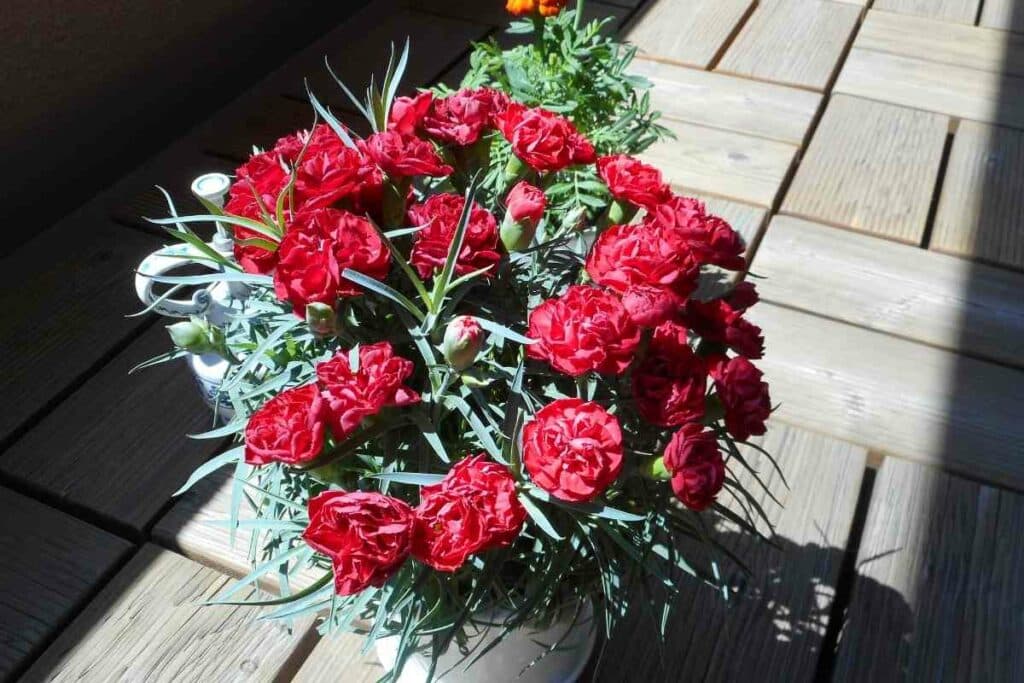
These are known around the world for their symbolism in love and this is no different in Japan.
More often than not, Japanese people will give these flowers as gifts to their spouse or family member to show that they care.
What’s wonderful about them is that they come in an array of colors and can even be dyed to suit the occasion.
4. Tsubaki – The Camellia
The Tsubaki is a small tree or shrub which boasts beautiful deep green leaves.
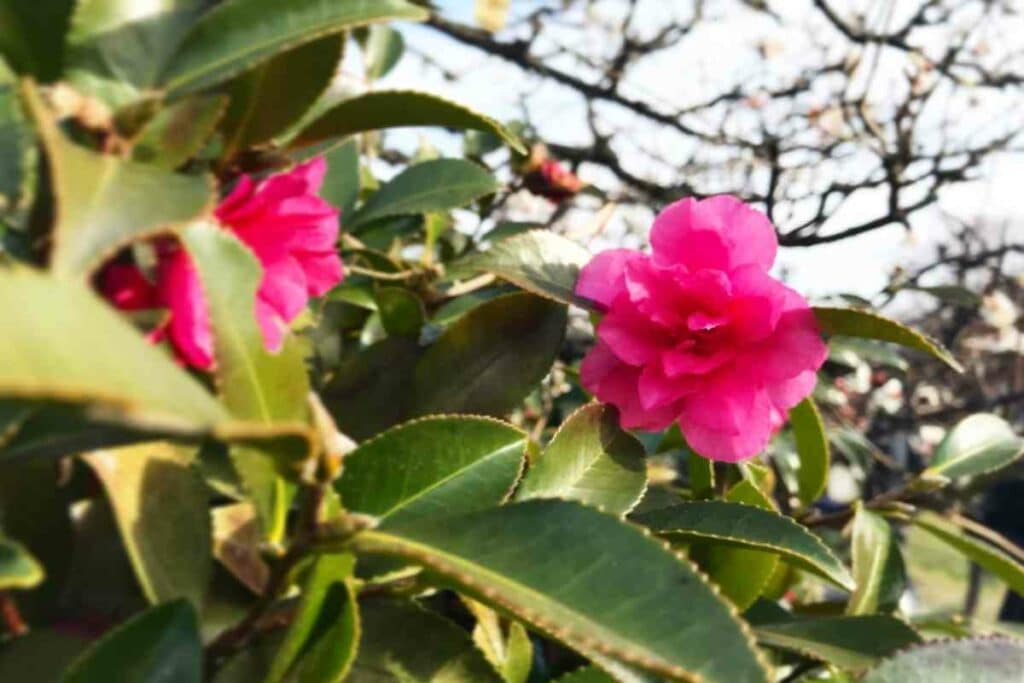
These evergreen plants bloom with beautiful large flowers that can grow up to 12cm in height.
The color of the flowers varies greatly and can be anywhere between pink and red with stunning yellow stamens.
Tsubaki flowers bloom in the spring and are very common around the coastal areas of Japan’s southern islands.
These flowers symbolize perfect love, discretion, and humility.
5. Asagao – Morning Glory
As you might guess from its name, the morning glory plant, known as Asagao in Japan, flourishes during the early morning.
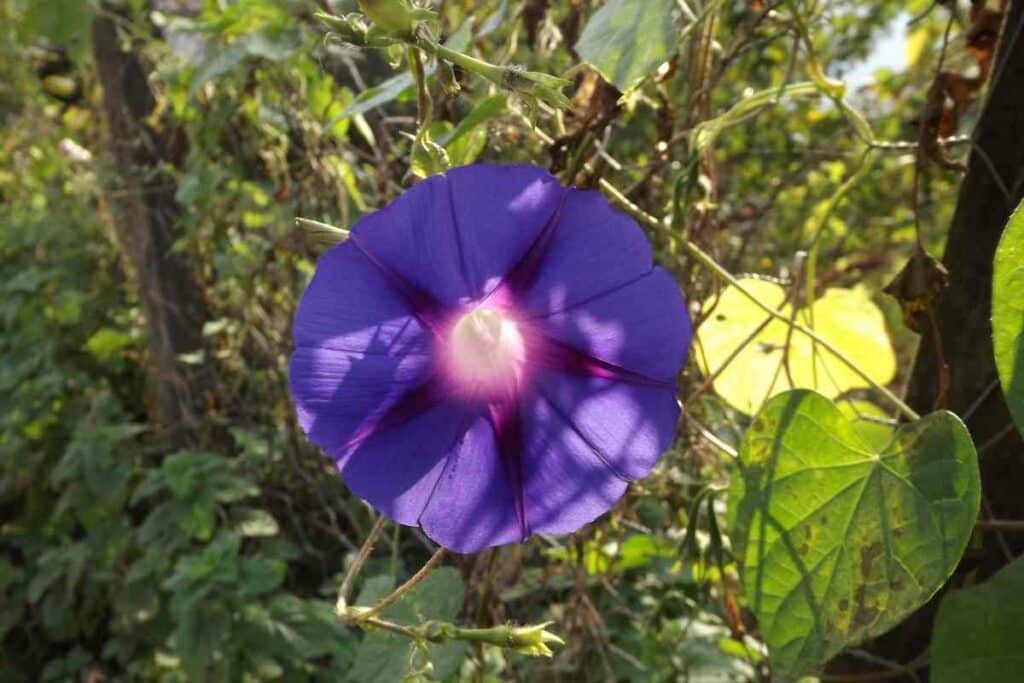
It prefers cool temperatures and a light breeze so straight away, you get a very romantic feeling from these flowers.
Rightly so, since the Asagao flower represents the bond of love between two people and are often found decorating ornamental gardens, particularly in Osaka.
They feature heart-shaped leaves which are very fitting to their meaning and the flowers have beautiful white and blue streaks that almost make them look as though they have been tie-dyed.
6. Akaibara – The Red Rose
The red rose is known around the world as a symbol of love and romance and this is also the case in Japan.

Many people will present their significant other with a bunch of red roses or even a single rose to show their romantic feelings.
The Akaibara blooms most beautifully in the early autumn and can often be found in ornamental flower gardens around the country.
Most notably, these flowers are presented at Gora Park.
7. Sumire – Violet
A delicate and pretty flower, the sumire, or violet as it is known in English, grows from a small shrub, usually along a fence or wall in a garden.
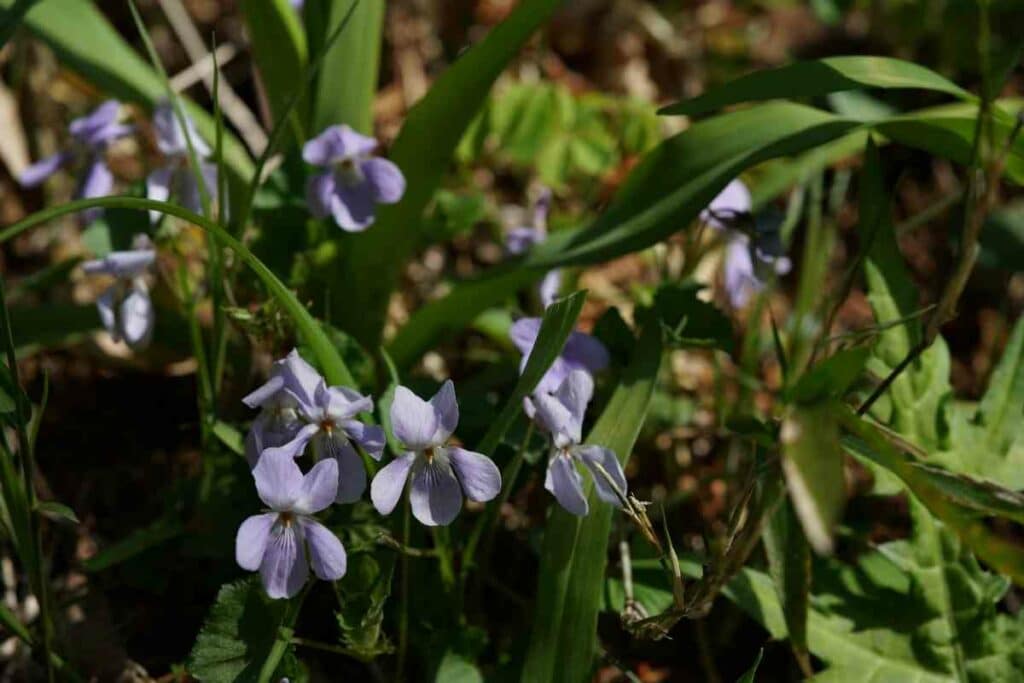
The flowers have a stunning bright purple color and the leaves and stem of the plant take on an ivory hue.
Many Japanese homeowners will plant violets in the front of their property to give it a more beautiful appearance.
The flowers symbolize bliss and sincerity and can be seen in large numbers across domestic and commercial Japanese gardens.
If you want to catch them as they bloom, you’ll need to be around in springtime.
8. Rabenda – Lavender
Lavender is a highly fragrant flower with a rich, earthy scent that is known for its relaxation properties.
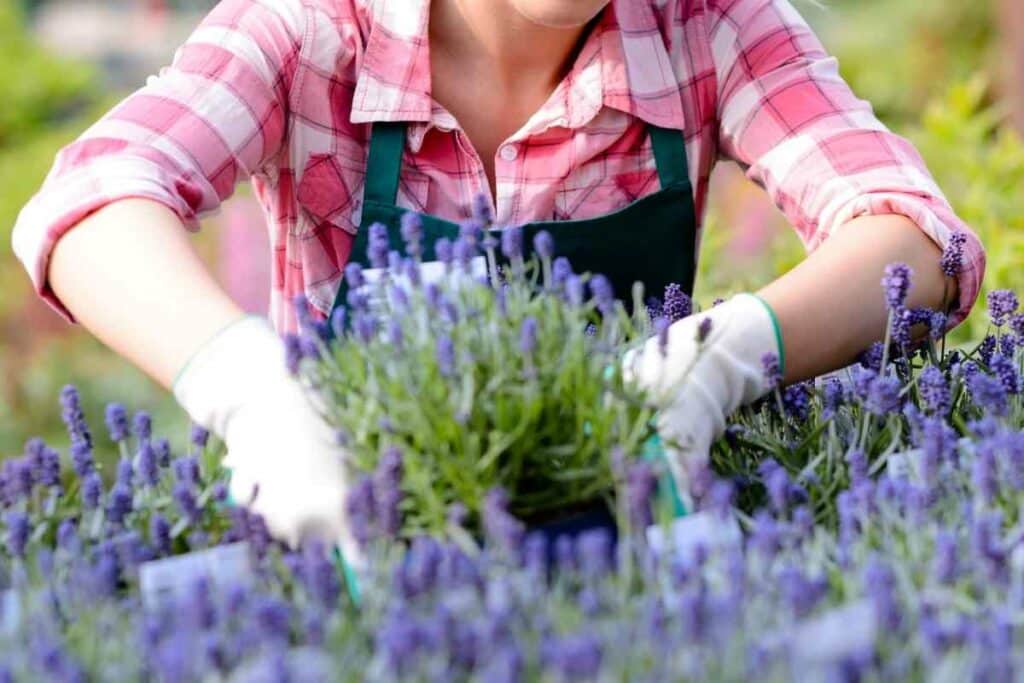
The purple blossom is edged in white and what makes lavender so special are the uniquely shaped petals that are also perfectly circular.
You’ll usually see lavender growing along a fence or in a border and in Japan, this flower is a symbol of faithfulness.
They’re widely spread in flower parks such as Tambara and can also be found growing wild in fields.
9. Sakura – The Japanese Cherry Blossom
You didn’t think we would compile a list of the most popular flowers in Japan without including the Sakura, did you?
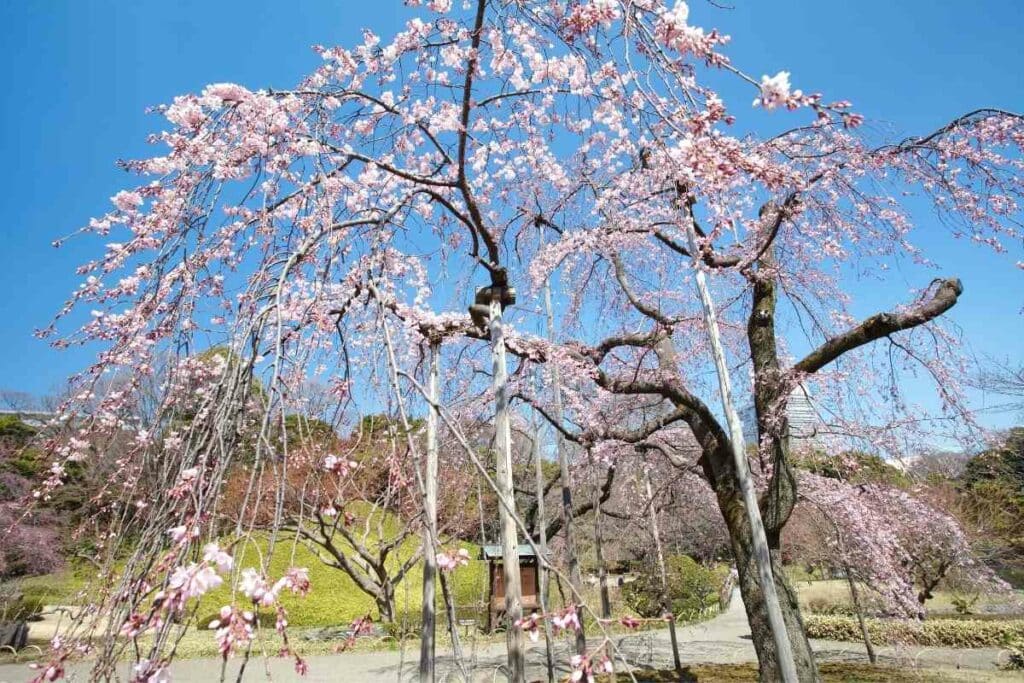
This has to be the one flower that almost anyone on earth would associate with this country and its delicate pink petals are truly a sight for sore eyes.
Blossoming into their full beauty in springtime, the Sakura flowers grow on the cherry blossom tree and are, in fact, Japan’s national flower. (no surprises there!)
These flowers are anywhere between white and pink and represent feelings of accomplishment as well as beauty of heart.
You’ll find them all over the country both in wild and commercial settings. The Tokyo Gardens and Hokkaido Island are renowned for their amazing sakura displays.
10. Shobu – Iris
In Japan, the iris, known as the shobu, is the bringer of good news.
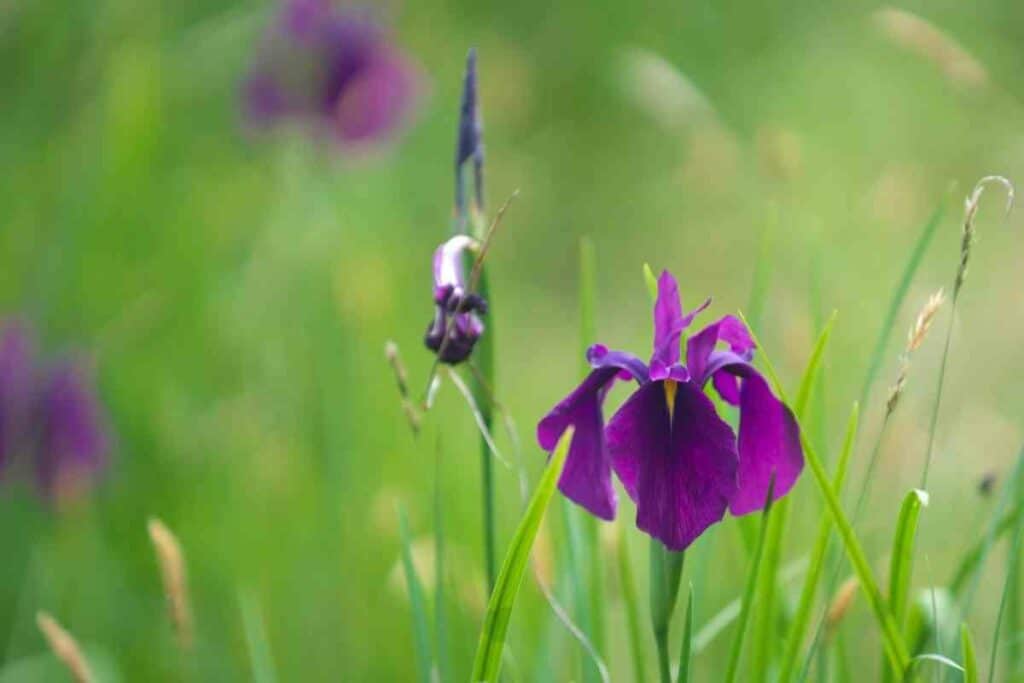
Many consider the shobu to be one of the most unique-looking flowers in the world with long purple petals that feature yellow stripes.
The iris blooms in spring and these flowers can be found in flower parks across the country including the Nabana No Sato Park.
As well as being a symbol of good news, the shobu also represents loyalty so may be considered a good gift for close friends and significant others.
Conclusion
From the amazing national flower of Japan; the sakura, to rich lavender and deep red roses, this is a country that takes pride in its gardens and floral displays.
There are a huge number of flowers that are popular here and our list introduces you to ten of the most special.
If you’re looking to create a Japanese garden at home, these blooms are definitely the place to start!
You May Also Like
- Philodendron Moonlight Vs. Golden Goddess
- How to Revive Your Rubber Plant: 6 Tips to Help Your Rubber Tree Thrive Again
- Your Money Tree Lost All Its Leaves – Will It Sprout Again?
- Why Is My Money Tree Dying? 5 Possible Reasons and Solutions
- Do Jade Plants Bloom – Fact or Fiction?
- Plants with Heart Shaped Leaves (Secret Language of Leaves)

